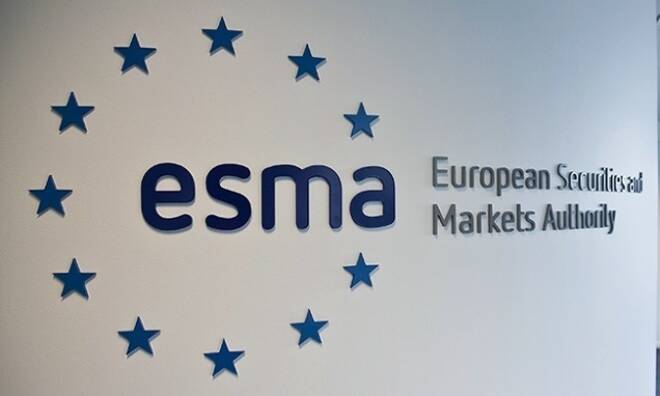Advertisement
Advertisement
ESMA Regulations: A Brief History of Regulation
Updated: Mar 4, 2019, 13:21 GMT+00:00
Intro
The departure of a very prominent broker from the US market made waves back in 2017. The blowback though was felt by the entire industry…globally. This
The departure of a very prominent broker from the US market made waves back in 2017. The blowback though was felt by the entire industry…globally. This tarnished the industry’s (admittedly) not so pristine image which it is still trying to recover from.
Then earlier this year Chinese authorities enacted their own CFD crackdown, by contacting the heads of foreign CFD companies and inviting them to a quiet little sit-down. In the company of a few dozen police officers.
This isn’t the first time the CFD industry has experienced a crackdown – just a few years ago brokers were forced by the FCA to fully screen and assess the competence of their clients. Gloom and doomers across the industry said the sky was falling, that this would cripple the industry, lessen their pool of clients. Not really – it just made the industry better, as a result, many brokers started offering education to their traders in the form of webinars, ebooks, and video tutorials.
We have also seen in the past few months a global clampdown on unregulated brokers – but of course, those were illegal anyway. The regulations are targeting legal and fully regulated brokers.
Why ESMA Why?!
ESMA isn’t happy that many FX or retail CFD brokers target novice and inexperienced traders. This is why it is restricting high leverage which is often used by new traders but avoided by experienced traders.
Forums were ablaze with complaints of a nanny state and unnecessary restriction under the guise of protecting new traders.
But hear me out, maybe the problem goes deeper – maybe the reason new traders are losing is that although they trade with high leverage – they probably are unlikely to do so with a trading strategy and risk management measures in place. This is why there is a high rate of failure amongst inexperienced traders – a lack of risk management and trading without a strategy. How can I claim so vehemently that these are the mistakes new traders make? Well because they use high leverage – that’s all the proof needed.
The most rudimentary type of risk management is the so-called risk-reward ratio. It basically calculates the amount of risk that needs to be taken for a target return. The lower the ratio the more conservative your ration is. Leverage increases risk – which sure increases the potential reward…but again the possibility of getting that reward is greatly diminished.
Risk Reveal Yourself! Leverage you’re Cool.
Obviously, the biggest unknown when forex trading is the risk. A trade moving against you can decimate both your account and if you are trading with a broker that doesn’t offer negative balance protection, it could put you in debt.
If you haven’t been keeping track, leverage increases risk, which is why ESMA is targeting it in its new regulations. The higher the leverage – the higher the risk.
What if you could know what your risk was though and still use significant leverage? Impossible right? Wrong.
Some brokers are offering ways to trade CFDs with known and even predefined risk with access to significant leverage.
One of these tools, easyTrade, not only allows traders to set their maximum risk, it uses an ingenious way to offer trading that doesn’t require margin, which means trades won’t be closed out by margin stop-out by basing the new product on vanilla options.
Another great benefit is that easyTrade does not cap your trade’s potential. Some financial instruments, like binary options for example, feature fixed payout no matter how well the trade goes.
About the Author
Advertisement
Table of Contents
Advertisement
Advertisement
Advertisement
Advertisement
